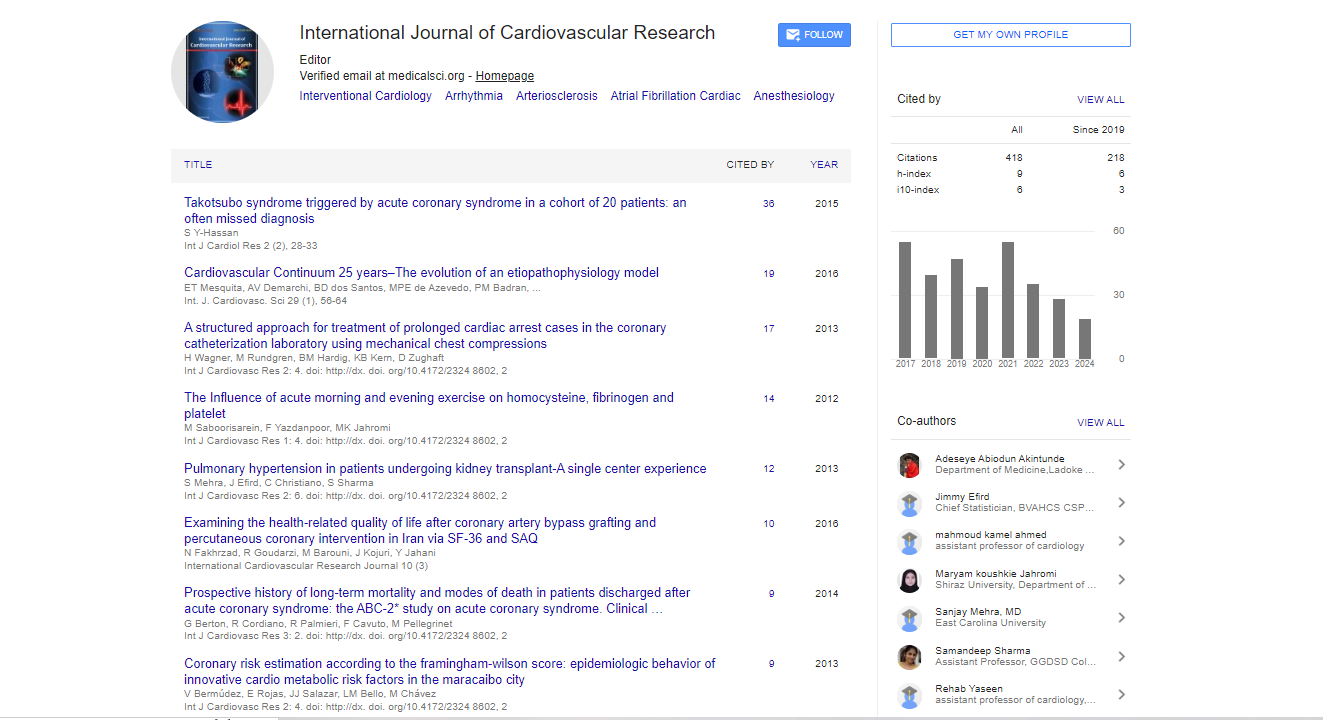Research Article, Int J Cardiovasc Res Vol: 4 Issue: 1
Determination of the Accuracy of Ultrasound for Detecting Stenosis in Tissue Engineered Vascular Grafts in a Murine Model
| Nathan Mahler*, Yong-Ung Lee, Tai Yi, Cameron Best, Iyore James, Shuhei Tara, Toshiharu Shinoka, Christopher Breuer |
| Tissue Engineering Program and Surgical Research, Nationwide Children’s Hospital, Columbus, USA |
| Corresponding author : Christopher K Breuer Research Institute Nationwide Children's Hospital, 700 Children's Drive-WB4151, Columbus, Ohio 43205-2664, USA Tel: + 614-355-5754; Fax: 614-355-5726 E-mail: Christopher.breuer@nationwidechildrens.org |
| Received: March 03, 2015 Accepted: March 28, 2015 Published: March 30, 2015 |
| Citation: Mahler N, Lee YU, Yi T, Best C, James I, et al. (2015) Determination of the Accuracy of Ultrasound for Detecting Stenosis in Tissue Engineered Vascular Grafts in a Murine Model. Int J Cardiovasc Res 4:1. doi:10.4172/2324-8602.1000194 |
Abstract
Determination of the Accuracy of Ultrasound for Detecting Stenosis in Tissue Engineered Vascular Grafts in a Murine Model
Tissue-engineered vascular grafts (TEVGs) offer a viable solution to the complications derived from using synthetic materials for correction of congenital cardiovascular defects. Our TEVGs possess the ability to grow with a patient, thus making them well suited for application in pediatric populations. In our clinical trial involving patients with congenital heart disease, the TEVGs demonstrated the ability to grow with a patient without significant morbidity due to graft-related complications; however, stenosis development remained a substantial drawback in long term neovessel performance, affecting up to 24% of patients who underwent the operation. We developed a mouse model of inferior vena cava (IVC) interposition graft implantation in order to study cellular and molecular mechanisms of nonissue formation, to investigate factors that contribute to stenosis development, and to evaluate new strategies to prevent stenosis. Graft explanation and subsequent histological evaluation has been considered the definitive gold standard for analysis of neovessel patency in this model. Histology requires animal sacrifice at each observational time point, consequently prohibiting the serial follows up of the same animals at future time points. This is a significant deterrent to the usefulness of the model, as its intended purpose is to provide insights into the long-term performance of TEVGs, ultimately leading to the creation of an improved second-generation vascular graft. In addition, grafts that are used for histology cannot be used for other methods of characterization that require unfixed tissue samples, such as mechanical testing, western blotting, flow cytometry, and PCR. An accurate, noninvasive monitoring technique is therefore required to enable serial monitoring of TEVG implants over a time course that spans scaffold degradation and neo-vessel remodeling. Clinically, ultrasound has long been accepted as a highly accurate method for detecting vascular graft stenosis or occlusion in patient populations. In addition, ultrasonography has been used to successfully monitor TEVG performance in larger animal models. The use of this common imaging modality in a mouse model is difficult due to decreased vessel and graft size. Although we have previously used ultrasound to evaluate TEVG remodeling in the mouse, no detailed analysis has been performed to evaluate the efficacy of its use in this model. In the current report, we perform a detailed retrospective analysis of mouse TEVG ultrasound data to verify the accuracy of this technique in monitoring TEVG performance. Our aim is to determine whether ultrasound is an accurate and reliable method to serially monitor TEVG remodeling in the mouse. This analysis will have significant implications for the design of future experiments.
 Spanish
Spanish  Chinese
Chinese  Russian
Russian  German
German  French
French  Japanese
Japanese  Portuguese
Portuguese  Hindi
Hindi 



